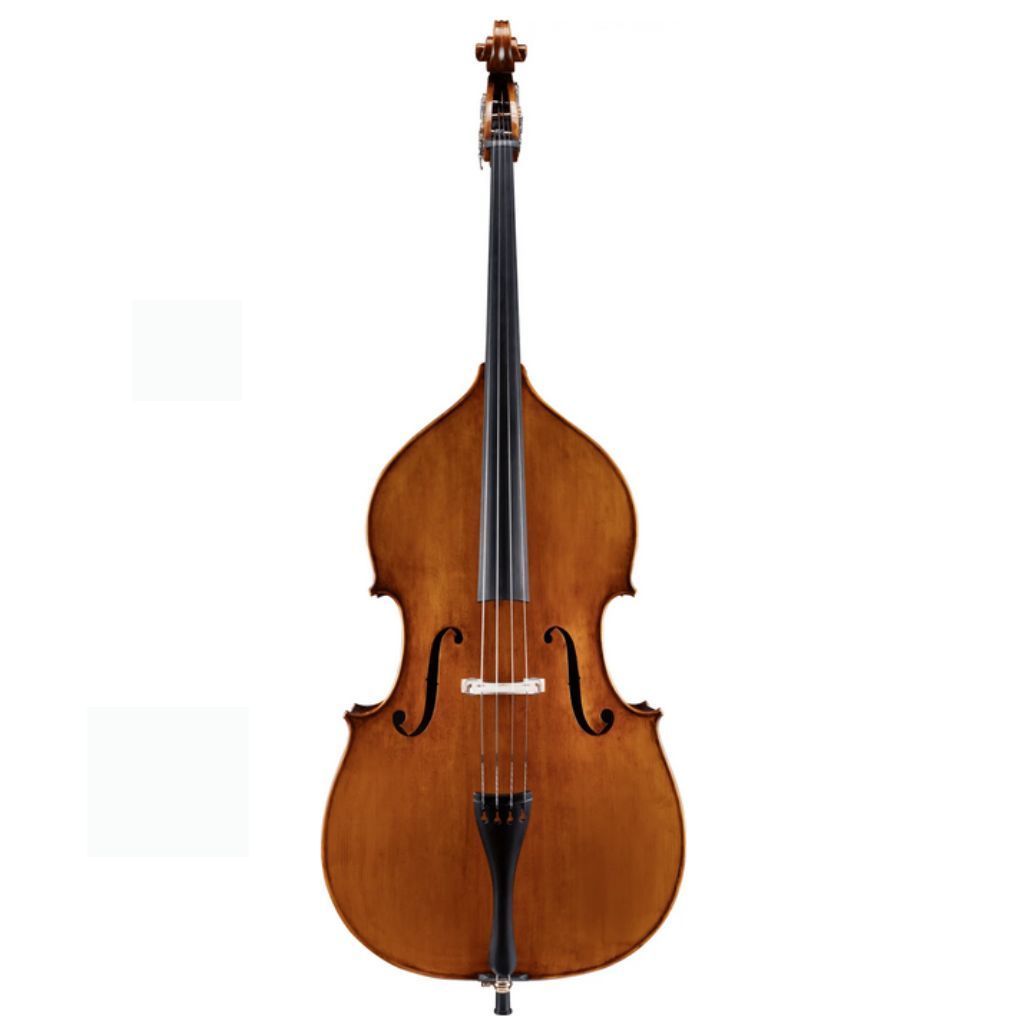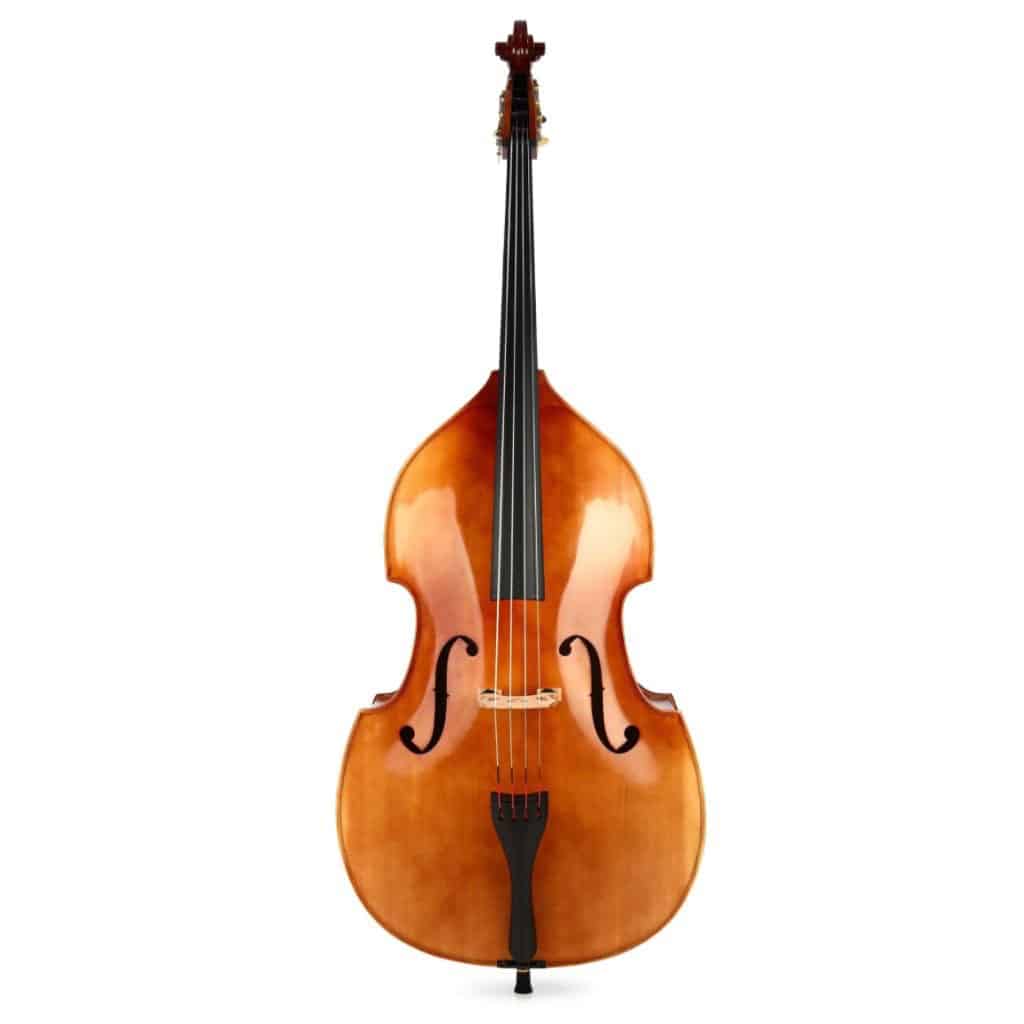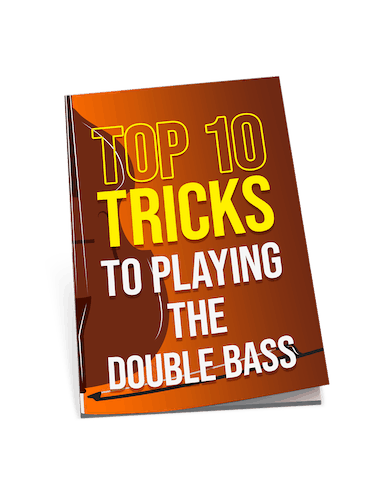Welcome to the wonderful string family world of double bass sizes! If you’re looking for a new instrument, then you’ve come to the right place – our Double Bass Size Guide. Here we will explore the different sizes of double basses, discovering which one is right for you and your musical needs. So buckle up and let’s get to exploring!
The double bass, also known as the contrabass and even an upright bass, is a cornerstone of classical and jazz music. Its deep, booming tones give the music unparalleled resonance and depth.
Double bass players have a variety of sizes to choose from that range from soloist models to larger orchestral models suitable for ensembles. There are also variations within each size category such as different woods used for construction or even six-string models rather than four.
To better inform your decision-making when selecting your perfect instrument here is an overview on understanding and buying the ideal double bass for you!
What is a Double Bass?
The Double Bass instrument is the largest and lowest-pitched bowed string instrument in the modern symphony orchestra. It is also known as stand up bass or upright bass.
Used in almost every musical setting, double basses are essential to most musical styles including classical, jazz, bluegrass, country/western and more.

However unlike other stringed instruments such as guitars which come in left and right-handed versions; double basses are always built to be played exclusively left-handed meaning that when holding it vertically the scroll should be towards your left shoulder.
Does Size Make a Difference When Buying a Double Bass?
When it comes to buying a double bass, size does make a difference.
Double basses come in five different sizes: 1/8, 1/4, 1/2, 3/4 and 4/4.
The dimensions of a double bass typically vary, but the average height ranges from 42 to 48 inches, while the body length measures about 43 to 47 inches. The width of a double bass can span from 16 to 20 inches, depending on the model and design.
Understanding the differences between double bass measurements should be at the forefront of your considerations when purchasing a double bass.
What Size Upright Bass Should I Get?
If you’re thinking about playing upright bass, then one of the first questions you’re probably asking yourself is what bass size should I get?
Your choice will be based on the style of music you want to play, your body type, and reach. That’s where double bass sizes come in.
What Sizes Do Upright Basses Come in?
Upright basses come in a variety of sizes, each suited to a specific purpose and musician.
1/8 double bass – Usually for children around 5-7 years of age.
1/4 double bass – A smaller instrument, usually for 7-9 year olds
1/2 double bass – Mainly for younger students, usually for 9-13 year olds or very small adults
Upright bass sizes typically range from 1/10 to full-size. The measurements refer to the length of the instrument’s body, with smaller sizes recommended for beginners or players of smaller stature. Full-size upright basses are commonly used by professional musicians and offer a rich, deep sound.
The height of a double bass, also known as an upright bass, typically ranges between 180 to 195 centimeters (6 to 6.5 feet). The dimensions can vary based on the instrument’s construction and the player’s preference.
The standard height allows for comfortable playing while providing optimal sound projection and resonance. The double bass height should be adjusted to accommodate the player’s comfort and playing style, ensuring proper posture and ease of performance.

3/4 double bass – Designed for smaller adult players and larger children aged around 14-18. This size works well with jazz, pop and classical genres due to its lightweight and smaller body.
4/4 double bass – The full size double bass, also known as the 4/4 double bass, is the largest and standard orchestral bass size, offering a deep, resonant sound suitable for classical, jazz, and other genres.
Many professionals prefer this size because it has greater resonance and more acoustic volume due to its larger body size and numerous tones available from the strings that span across itb
| Age of Child (years) | Double Bass size (fraction) |
|---|---|
| 5-7 | 1/8 |
| 7-9 | 1/4 |
| 9-13 (or small adult) | 1/2 |
| 14-18 | 3/4 |
| Adult | 4/4 (only if very tall/large hands, otherwise stick with a 3/4) |
Double Bass Sizing Terminology
The double bass dimensions typically include the overall length, body length, upper bout, middle bout, lower bout, and rib depth, which collectively contribute to the instrument’s size, resonance, and playability.
The double bass is a large instrument and is sometimes referred to by various sizing terminology. The most important terms are “inch”, “full size” and “fractional sizes.”
Inch refers to the overall length of the instrument, usually from the top of the neck up to the endpin (the metal spike that rests on the ground).
Full size typically refers to any standard 34-inch stringed instrument and can be called a 4/4 bass.
Fractional Sizes refer to any double bass that has been reduced in overall length from a full-size.

If you’re thinking about playing upright bass, then one of the first questions you’re probably asking yourself is what size should I get?
Your choice will be based on the style of music you want to play, your body type, and reach. That’s where double bass sizes come in.
Double Bass Recommendations
Eastman Master Series VB605 Professional Double Bass

FEATURES: Made from European tonewoods which have been aged for enhanced tonality and resonance
OTHER INFO: Set up with D’Addario Kaplan strings
- 3/4-size upright bass with Violin corners
- Hand-carved spruce top with flamed maple back and ribs
- Ebony fingerboard and tailpiece
- Rubner brass tuning machines
- Expensive
When you click ‘Check Price’, you’ll see there are loads of great places to buy this item. Our personal favorite is Sweetwater for the US, and Thomann and Gear4Music for the UK & Europe.
They are the largest music retailers, with excellent customer service, competitive prices, really fast shipping, and the longest guarantees.
The professional musician who wrote this article combined many things,
from the product build, manufacturer’s reputation through to feedback
from other users, to create our famous TedScore™.
Deluxe Solid Top Bass

COMES WITH: Bow & Hard Case
FEATURES: Quality Canadian Spruce & Maple Body
Deluxe Solid Top Bass
- 2-year warranty & 30-day money-back guarantee
- Triple Hand Lacquered & Varnished Orange-Brown Finish
- None
When you click ‘Check Price’, you’ll see there are loads of great places to buy this item. Our personal favorite is Sweetwater for the US, and Thomann and Gear4Music for the UK & Europe.
They are the largest music retailers, with excellent customer service, competitive prices, really fast shipping, and the longest guarantees.
The professional musician who wrote this article combined many things,
from the product build, manufacturer’s reputation through to feedback
from other users, to create our famous TedScore™.
Howard Core A43 Core Academy Double Bass

FEATURES: Boasts hybrid construction with a carved spruce top and laminated maple back and ribs.
OTHER INFO: Constructed with high-quality tuning machine
- Decorated with durable inlaid purfling for an added touch of elegance.
- It may have limitations in terms of specific preferences and individual requirements.
When you click ‘Check Price’, you’ll see there are loads of great places to buy this item. Our personal favorite is Sweetwater for the US, and Thomann and Gear4Music for the UK & Europe.
They are the largest music retailers, with excellent customer service, competitive prices, really fast shipping, and the longest guarantees.
The professional musician who wrote this article combined many things,
from the product build, manufacturer’s reputation through to feedback
from other users, to create our famous TedScore™.
Double Bass Sizes
Summary
If you’re looking to purchase your first bass, understanding the types and sizes available is important in order to make the right decision.
A double bass size chart provides a helpful reference for selecting the appropriate instrument size based on the player’s age, height, and playing experience, ensuring a comfortable and ergonomic fit for the musician.
Ultimately, preferred sizing will depend on personal needs, but understanding all your options gives you the power to choose what works best for you!
If you’ve enjoyed this article, please do comment below – and if you’re looking to purchase a bass, then take a look at our Double Bass Buyer’s Guide here.
FAQ's
It depends on your size and the type of music you plan to play. If you are an adult or large teen, it’s best to go with either a 3/4 or 4/4 double bass size. A 3/4 is ideal for playing classical music while a 4/4 will give more sound for jazz and blues tunes. On the other hand, if you are small in stature or a child, then it’s better to get either a 1/2 or 1/4 sized double bass.
The average double bass size of a full-size instrument is 45 inches (114 cm) tall with a body length of 41 inches (104 cm). Its neck is usually 27 inches (68.5 cm) long with a width of 2.9 inches (7.3 cm). The instrument’s strings are typically 34 to 36 inches (86 to 91 cm) long and range from .75 to 1 inch (1.9 to 2.5 cm) wide.
Yes, upright basses come in various sizes. The standard size is 4/4 and is the most common size. However, there are also 3/4, 1/2 and 1/4 sizes that are designed for children or small adults who may find the full-sized version difficult to play. There are also 5/8, 7/8 and even 6/4 sizes available for those looking for a larger instrument. Double Bass strings are made for the specific length of the instrument.
The double bass typically has four strings, which are tuned to E1, A1, D2, and G2. Occasionally, some double basses may have an additional string, usually a low C string.
The double bass is the largest and lowest pitched string instrument in the orchestra, standing around 6 feet tall. It has a large, rounded body and a long neck with a scroll at the top.











Interesting read about the different sizes. Never knew how crucial size was for jazz. Would’ve loved more examples of jazz musicians and their preferred bass sizes.
Thanks for explaining the sizes, super helpful!
Right? Loved how simple they made it seem!
Great article on double bass sizes. Picking the right size truly does make a difference in handling and sound. Well done.
Hey Gemma , just read the bit where you talk about sizes of the double bass and I’m kinda stuck between choosing a 3/4 and a full size. I’m about to start jazz classes and I’m not that tall, think like 5’5”. Would a 3/4 size cut it for those deep jazz tunes or should I push for a full size for a richer sound? Would appreciate your advice!